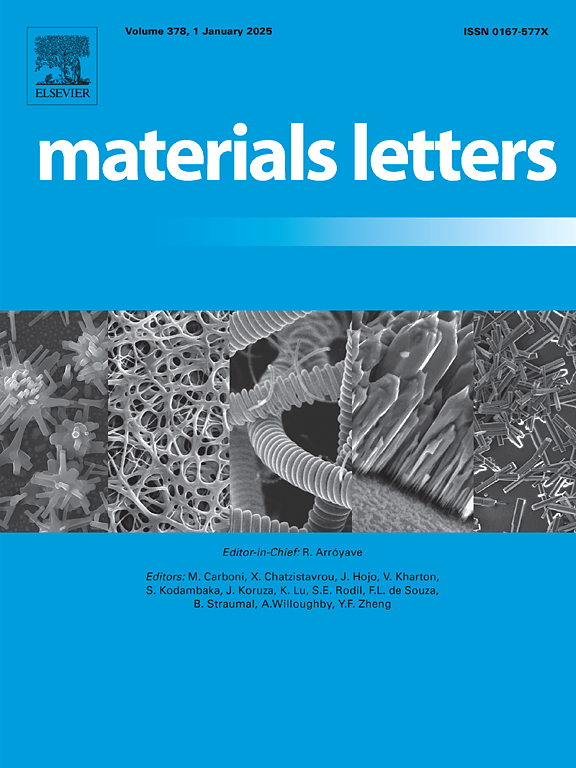Effect of sintering temperature on dielectric constant and electromagnetic shielding of La0.7Ca0.2Sr0.1CrO3 ceramics
IF 2.7
4区 材料科学
Q3 MATERIALS SCIENCE, MULTIDISCIPLINARY
引用次数: 0
Abstract
In this paper, the negative permittivity of perovskite-type La0.7Ca0.2Sr0.1CrO3 ceramics (LCSCOs) was reported for the first time. The effects of sintering temperature on their conductivity, permittivity, and electromagnetic shielding performance were explored. As the sintering temperature increased, the density of the LCSCOs increased. This enlarged the contact area between the grains and optimized the conductive pathways, consequently improving the electrical conductivity. Due to a certain number of free carriers in the LCSCOs, their collective oscillations resulted in negative permittivity. The elevated sintering temperature promoted the solid solubility of dopant atoms in ceramics, which ultimately resulted in an increase in the absolute values of negative permittivity. The Drude model could explain the negative permittivity. As the sintering temperature increased, the electromagnetic shielding performance of the ceramics improved due to the synergistic effect of increased density and conductivity.
烧结温度对La0.7Ca0.2Sr0.1CrO3陶瓷介电常数和电磁屏蔽的影响
本文首次报道了钙钛矿型La0.7Ca0.2Sr0.1CrO3陶瓷(LCSCOs)的负介电常数。探讨了烧结温度对其电导率、介电常数和电磁屏蔽性能的影响。随着烧结温度的升高,LCSCOs的密度增大。这扩大了晶粒之间的接触面积,优化了导电途径,从而提高了导电性。由于晶体中存在一定数量的自由载流子,它们的集体振荡导致了负介电常数。烧结温度的升高促进了掺杂原子在陶瓷中的固溶性,最终导致负介电常数绝对值的增加。德鲁德模型可以解释负介电常数。随着烧结温度的升高,陶瓷的电磁屏蔽性能随着密度和电导率的增加而提高。
本文章由计算机程序翻译,如有差异,请以英文原文为准。
求助全文
约1分钟内获得全文
求助全文
来源期刊

Materials Letters
工程技术-材料科学:综合
CiteScore
5.60
自引率
3.30%
发文量
1948
审稿时长
50 days
期刊介绍:
Materials Letters has an open access mirror journal Materials Letters: X, sharing the same aims and scope, editorial team, submission system and rigorous peer review.
Materials Letters is dedicated to publishing novel, cutting edge reports of broad interest to the materials community. The journal provides a forum for materials scientists and engineers, physicists, and chemists to rapidly communicate on the most important topics in the field of materials.
Contributions include, but are not limited to, a variety of topics such as:
• Materials - Metals and alloys, amorphous solids, ceramics, composites, polymers, semiconductors
• Applications - Structural, opto-electronic, magnetic, medical, MEMS, sensors, smart
• Characterization - Analytical, microscopy, scanning probes, nanoscopic, optical, electrical, magnetic, acoustic, spectroscopic, diffraction
• Novel Materials - Micro and nanostructures (nanowires, nanotubes, nanoparticles), nanocomposites, thin films, superlattices, quantum dots.
• Processing - Crystal growth, thin film processing, sol-gel processing, mechanical processing, assembly, nanocrystalline processing.
• Properties - Mechanical, magnetic, optical, electrical, ferroelectric, thermal, interfacial, transport, thermodynamic
• Synthesis - Quenching, solid state, solidification, solution synthesis, vapor deposition, high pressure, explosive
 求助内容:
求助内容: 应助结果提醒方式:
应助结果提醒方式:


